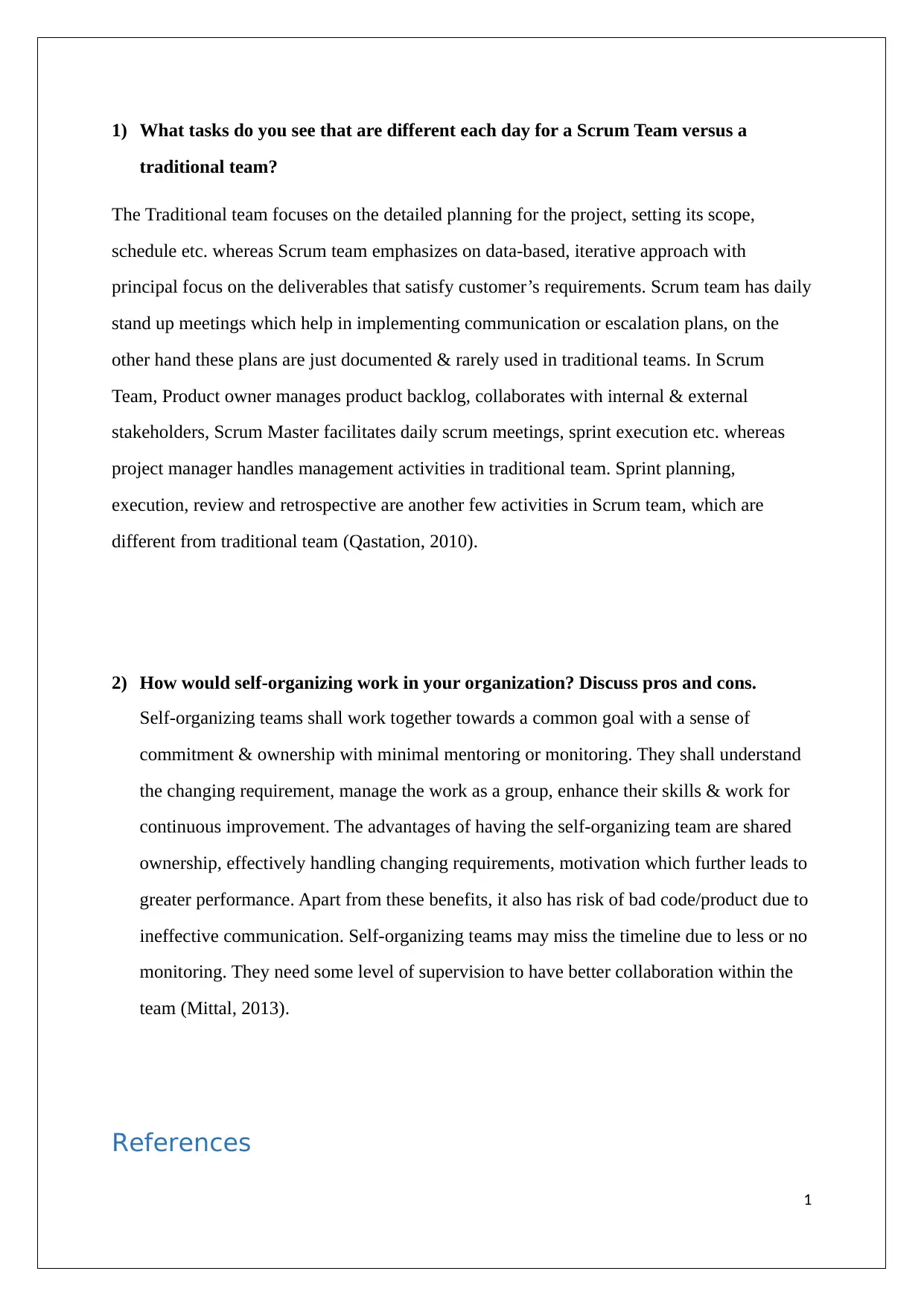Comparison of Scrum Team and Traditional Team in Project Management
VerifiedAdded on 2020/03/16
|3
|340
|135
Report
AI Summary
This report analyzes the differences between Scrum and traditional project management methodologies, emphasizing the shift from detailed planning to iterative, data-driven approaches in Scrum. It highlights the distinct roles, communication strategies, and processes within each team structure, such as the Product Owner in Scrum versus traditional project managers. The report also explores the concept of self-organizing teams, discussing their advantages like shared ownership and adaptability, alongside potential drawbacks such as the risk of ineffective communication and the need for some level of supervision to maintain team collaboration. The provided references support the analysis of these project management approaches.
1 out of 3










![[object Object]](/_next/static/media/star-bottom.7253800d.svg)